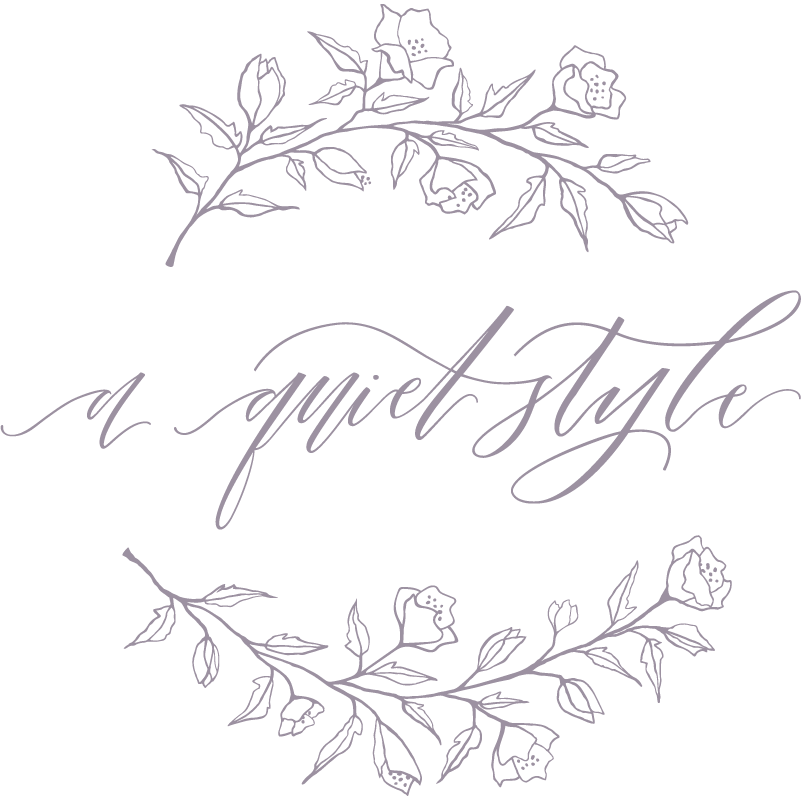My Favourite Flower - Emma Mitchell
This month's My Favourite Flower column feels like a real treat for me, my guest is Emma Mitchell, a craftswoman, jewellery-maker, teacher and writer for Standard Issue Magazine. Emma is clearly passionate about flowers, in particular those of a wild variety, in fact, she often photographs and labels them for her instagram photos. They are always a joy to see whenever they pop up in my feed. When I read Emma's thoughts on her favourite flower, I have to confess it made me feel quite emotional, I know that I am a sentimental fool, but Emma writes beautifully, and her passion just shines through, here is what she has to say:
My favourite flower: Umbellifers
‘Quite a sensitive friend glanced at a jar of cow parsley in our open grate and said in surprise that it looked really pretty, adding in a voice of smashing finality: What a pity it was a weed.’
Clare Leighton, Four Hedges, 1935.
Conjure an image of a British Spring or Summer in your mind – away from the coast, inland, where it’s green -the kind of vista that inspired Vaughan Williams. Do you have it? Is there a field or meadow? Might there be a hedge lining it? Is that a haze of lacy, cream, umbrella-like flowers along the hedgerow? Those flowers, right there, are my favourites.
Umbellifers are those pale parasol-shaped blooms that appear in the fields and vergesides in most corners of Britain. They’re ubiquitous, self seed like billy-oh, pop up in the cracks of pavements and on waste ground and punctuate the winter hedgerows with the beautiful silhouettes of their seedheads. They are cow parsley, wild parsnip, hog weed and hemlock; wild fennel, hedge parsley and yarrow. They’re ubiquitous and humble yet exquisite and inspiring.
This group of flowers provide excellent habitats for invertebrates and I’ve actually seen Fenland bees sheltering beneath them in manner of tiny umbrellas when it rains. Hoverflies adore them, butterflies congregate on them in the wood behind our cottage and ladybirds use them as the basis of their café culture– meeting, snacking on aphids on the flattish flowerheads and sometimes *coughs* the ladybird with two backs.
Cow parsley, hogweed and fennel’s little umbrella-like flowers have long been design muses. Elizabeth Sonrel painted ‘Our lady of the cow parsley’ in the early twentieth century and her botanical goddesses echo the style of Burne Jones and the belle epoque. Lucienne Day’s iconic mid century textile designs stylised both the atomic age and botanical themes and she was discovered in the early fifties by Tom Worthington, the fabrics director of Heals. Her fifties style of surface pattern has had a resurgence in recent years and her original pattern ‘calyx’, inspired by umbellifers was reproduced by Heals as part of a retrospective collection in 2010.
Angie Lewin, one of my favourite designers, helped to bring the image and shape of the umbellifer seedhead into the mainstream in 2007, when her understated beautiful botanical prints were featured in Country Living magazine. I spotted them shortly afterwards on the shelves of Habitat. From there this pleasing hemispherical botanical motif appeared on high streets, design blogs and interiors schemes. It is an enduring design muse.
The shapes and textures of cow parsley and yarrow seedheads crept into my designs several years ago inspired by the trend for celebrating botanical shapes and earlier this year I ran a workshop at Common Farm Flowers inspired by the May posies we picked from Georgie’s plot that same day. Cow parsley was prevalent in our final Spring jam jar gatherings and I taught the posy pickers to make small, wearable fine silver cow parsley pendants and tiny articulated forget me nots to accompany their flowers. I was determined to design a crochet version too and over the summer my hooking skills eventually built to the point where I could conjure and annotate a pattern. This umbellifer garland was the result (and it wont fade as winter approaches).
As for my favourite way to display them, I admit to bunging them in a jug with very little ceremony or styling. I love their lacy looks and delicate skeletal silhouettes once they’ve gone to seed and they lend themselves perfectly to a natural posy. My two girls (7 & 9) know how much I love this flower shape and often bring me a small collection of them from the garden or hedgerow, clutched in a small fist. I confess I prefer them to rather more pampered, highly bred flowers that might be found at the florist. Last year, for the first time, cow parsley and hedge parsley self-seeded in my garden, brought in on the foot of an obliging robin perhaps. This year the drift of floral lace grew rather larger and I couldn’t have been happier about this. Umbellifers for free- a small patch of hedgerow in my back garden. Clare Leighton’s friend was wrong: cow parsley is not a weed. It is, I feel, one of the finest British flowers and should be revered.
All photos by Emma Mitchell
Thank you so much for sharing your favourite flower Emma, as I already said above and to you, I love what you have written about it, and your fascinating and stunning photos. I too, am a fan of umbellifers, in particularly the humble cow parsley, and you will often find it crammed en masse in a jug in my home. Simple, yet so intricate, and I agree with you, most definitely not a weed!
You can find Emma here:
Blog - Silver Pebble Jewellery
Instagram - @silverpebble2
Twitter - @silverpebble
Have a great weekend.
Emma x








